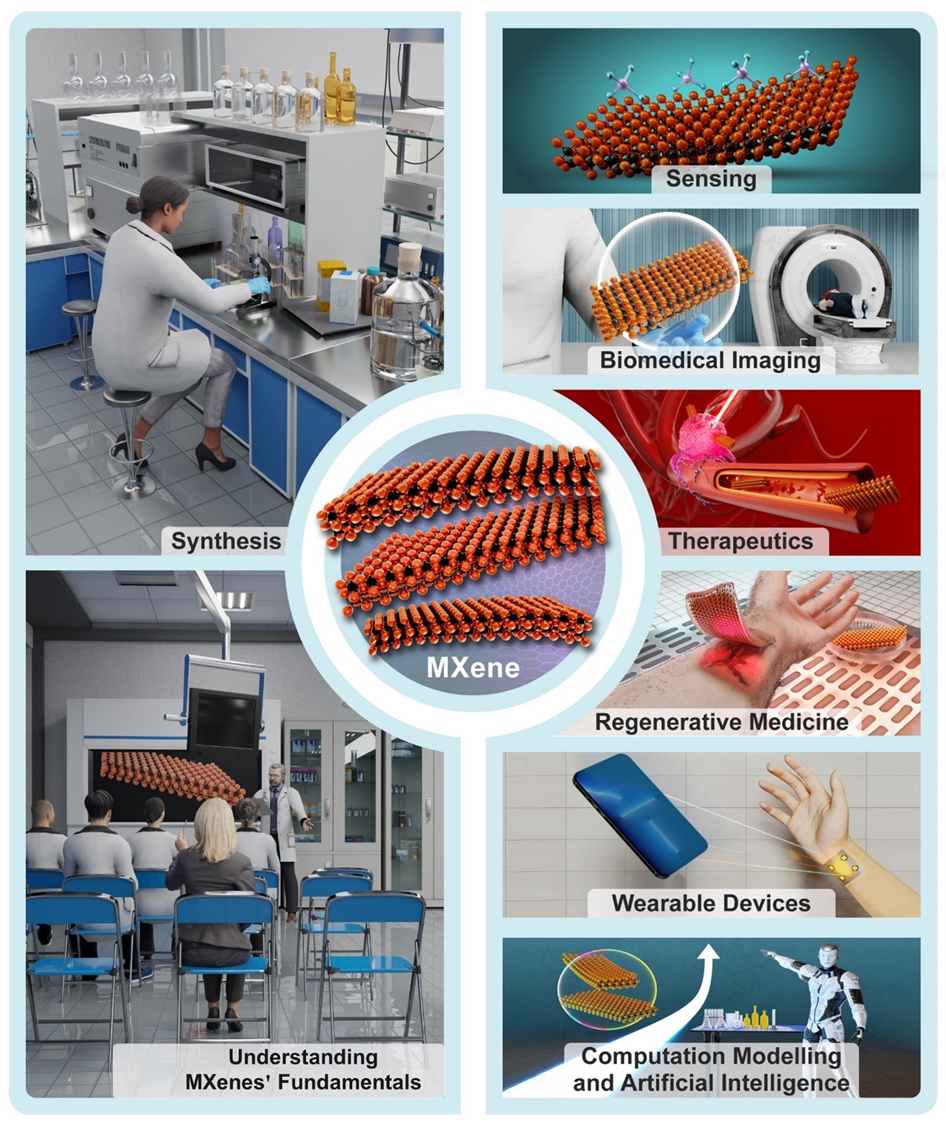Researchers at ICN2 have carried out a review study on MXenes, an innovative group of 2D materials with great impact and potential in biomedicine. Published in Chemical Society Reviews, the study provides an in-depth analysis of their outstanding properties, synthesis methods and current challenges.

Since their discovery over a decade ago, MXenes have marked a turning point in materials science. Similar in structure to graphene, these 2D compounds consist of layers of metals such as titanium or molybdenum combined with carbon or nitrogen atoms. Their exceptional electrical conductivity, mechanical stability and hydrophilicity have made them key materials for a wide range of applications, spanning from energy storage to medical devices.
A new review study, led by Dr Zaheer Ud Din Babar, Dr Ruslán Álvarez and ICREA Prof. Arben Merkoçi (ICN2 Nanobioelectronics and Biosensors Group) and published in Chemical Society Reviews, details the fundamentals and properties of MXenes, the available synthesis methods and their potential in healthcare.
Research lines, challenges and prospects
The study examines in detail the various methods of MXene synthesis to standardise and establish guidelines for their production and development. It also highlights their various applications in biomedical research:
- Sensors and diagnostics tools: their electrical and optical properties make them ideal for the detection of biomolecules or metabolites.
- Antiviral nanotherapies and immunomodulation: they have shown the ability to inhibit viral replication and have anti-inflammatory properties.
- Drug delivery: they can also act as platforms for the controlled transport and release of drugs.
- Medical imaging: their ability to absorb and emit light makes them candidates for improving imaging techniques such as magnetic resonance imaging
The study also explores how artificial intelligence and machine learning can optimise the development of MXenes, compare them with other 2D materials and propose strategies for their future development.
Despite their enormous potential, there are still challenges to overcome before MXenes can be used commercially in biomedicine. Biocompatibility, potential toxicity and lack of standardised manufacturing protocols are some of the obstacles to be addressed before large-scale clinical use.
In short, this review provides a comprehensive overview of MXenes, from their synthesis to their applications in healthcare, consolidating them as one of the most promising options in nanomedicine in the coming years.
Reference article:
Babar, Z; Iannotti, V; Rosati, G; Zaheer, A; Velotta, R; Della Ventura, B; Álvarez-Diduk, R; Merkoçi, A. MXenes in healthcare: synthesis, fundamentals and applications. Chemical Society Reviews. (2025). https://doi.org/10.1039/D3CS01024D.

